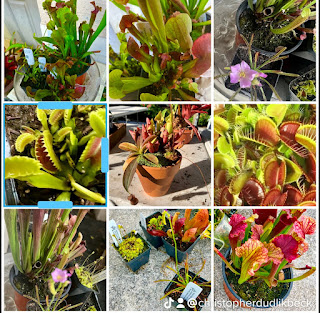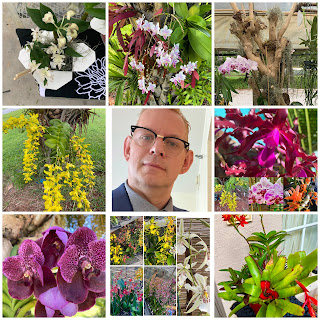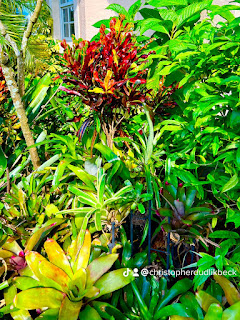gay #instagay #lgbt #gayboy #pride #lgbtq #love #gayman #gaypride #loveislove #gaymen #queer #gayguy #gaylife #gaylove #bisexual #like #follow #instagood #gayhot #gayfollow
WHY I DO THIS BLOG ON RARE PLANTS
According to the report “State of the worlds plants”by researchers at the Royal Botanic Gardens, Kew, in the United Kingdom, there are about 391,000 species of vascular plants currently known to science. Of these, about 369,000 species (or 94 percent) are flowering plants.
By scanning through several plant databases, including the the Plant List, the International Plant Names Index and the World Checklist of Selected Plant Families, the team found that 391,000 vascular plants are currently known to science. Moreover, about 2,000 new plant species are discovered or described every year. Many of these newly described are already on The endangered list
#plantaddict #rareplant
#plantgeek
#love
gay #instagay #lgbt #gayboy #pride #lgbtq #love #gayman #gaypride #loveislove #gaymen #queer #gayguy #gaylife #gaylove #bisexual #like #follow #instagood #gayhot #gayfollow
#pride
#gay #instagay #lgbt #gayboy #pride #lgbtq #love #gayman #gaypride #loveislove #gaymen #queer #gayguy #gaylife #gaylove #bisexual #like #follow #instagood #gayhot
Collage a whole one folder on my phone
Using coconut water as a plant hormone
Using coconut water for endospermic seed germination..and rooting hormone.
Introduction
Seed germination is an essential stage for plant growth and development, as it is the point where the seed transforms from its dormant state to an active seedling. Factors such as soil moisture, temperature, light, and nutrients play critical roles in this process. Recently, there has been growing interest in the use of organic substances, such as coconut water, in seed germination. This paper will explore the effects of coconut water on seed germination and plant growth.
Coconut Water Composition and Nutritional Properties
Coconut water is the liquid inside a green coconut, which is rich in nutrients such as vitamins, minerals, and amino acids. It has been found to contain cytokinins, auxins, and gibberellins. Cytokinins help cells divide and promote leaf growth. Auxins regulate plant growth and stimulate the formation of adventitious roots. Gibberellins promote stem elongation and flower development.
Coconut Water in Seed Germination
The use of coconut water in seed germination has been a subject of research and discussion for some time. Studies have shown that coconut water promotes seed germination, enhances root growth, and increases plant vigor. The cytokinins in coconut water stimulate cell division and promote the development of cotyledon and hypocotyl in the germinating seed. The auxins found in coconut water aid in the development of the primary root and lateral roots.
Research has also found that coconut water has a positive effect on seedling vigor. A study conducted by Kaur et al. (2012) found that the use of coconut water in seed germination resulted in the growth of a more extensive root system, thicker hypocotyl, and larger cotyledons compared to the control group.
Coconut Water in Plant Growth
Coconut water has also been found to have a positive impact on plant growth. Research indicates that the use of coconut water as a foliar spray in plant growth promotes better nutrient uptake, resulting in thicker, greener leaves and increased plant height. A study conducted by Mendez et al. (2019) in strawberry plants found that the use of coconut water as a foliar spray resulted in bigger and heavier fruits.
Proper Use of Coconut Water
Although coconut water has been found to be beneficial in seed germination and plant growth, it is vital to use it correctly. The potency of coconut water varies as it is sourced from different coconut varieties, and the stage at which it is harvested, so it is important to ensure that the coconut water is fresh and of good quality. A study conducted by Hossain and Rahman (2011) found that fresh coconut water yielded better results than coconut water stored for extended periods.
Conclusion
Coconut water is an excellent organic substance that has been found to promote seed germination, enhance root growth, and increase plant vigor. The cytokinins, auxins, and gibberellins present in coconut water provide the necessary nutrition for the seedling to develop, leading to better-quality crops. However, proper use of coconut water is necessary for optimal results. Further research is necessary to understand the best practices for the use of coconut water in seed germination and plant growth for different crop types.
References
Hossain, M. M., & Rahman, M. M. (2011). Adventitious rooting in tissue-cultured seedlings of sorghum: Its significance and ways of optimization. Plant Cell Reports, 30(5), 741-749.
Kaur, G., Asthir, B., & Bains, T. S. (2012). Coconut water priming improves seed germination and seedling vigour in mungbean (Vigna radiata L. Wilczek). Legume Research-An International Journal, 35(4), 331-336.
Mendez, L. T., & Khatibi, P. A. (2019). Coconut Water Promotes Plant Growth and Fruit Quality in Strawberry (Fragaria ananassa) Plants. Journal of Plant Growth Regulation, 38(4), 1524-1534.
Rare, bromeliad planter
my invisible throne
Almost Unkillable plant species for those who are plant challenged
Plant species for plant killers… they are almost impossible to kill… the plants …not the people lol
found some tough plant species that are almost impossible to kill. I’ve listed them under the common names because they are for plant beginners.
1. Snake plant: This plant is almost indestructible and can thrive in almost any conditions, including low light and minimal water.
2. ZZ Plant: This is another species that can survive in low light and is practically impossible to kill.
3. Pothos: Pothos can tolerate low light and infrequent watering, making them great for beginners.
4. Aloe Vera: This plant can survive long periods without water and is also known for its medicinal properties.
5. Spider Plant: Spider plants are very adaptable to different environments, including low light and high humidity.
6. Jade Plant: Jade plants can tolerate neglect and lack of water for extended periods of time, but they do require occasional watering.
7. Peace Lily: Peace lilies are one of the easiest plants to care for and can survive in low light and dry conditions.
8. Rubber Plant: Rubber plants are resilient and can withstand a variety of conditions, including low light and periods of drought.
9. Cactus: Cacti are well-known for their ability to survive in harsh desert environments and require minimal watering.
10. Succulents: Succulents are hardy plants that can survive in drought-like conditions, making them ideal for those who forget to water their plants.
Warning, most of these are toxic (to children and pets)… But I figured if you can’t keep our plant alive… Lol
13 fragrant tillandsias
fragrant tillandsia species:
- Tillandsia albertiana
- Tillandsia aromatica
- Tillandsia cyanea
- Tillandsia duratii
- Tillandsia fasciculata
- Tillandsia gardneri
- Tillandsia ionantha
- Tillandsia juncea
- Tillandsia kautskyi
- Tillandsia odorata
- Tillandsia streptophylla
- Tillandsia tectorum
- Tillandsia usneoides
The best Clerodendron
Clerodendrum wallichii, also known as Harlequin Glorybower or Bleeding-heart Clerodendrum, is a deciduous shrub belonging to the family Lamiaceae. It is native to the Himalayas, from Pakistan to Nepal, Bhutan, and China. The plant prefers warm temperate to subtropical climates and grows well in well-drained soils with moderate moisture levels.
Clerodendrum wallichii grows up to 3 meters in height and has an upright branching habit with large, ovate leaves that can grow up to 25 cm long. The flowers are tubular, white, and pink, with showy crimson calyces, and can bloom from early summer to fall. The berries of this plant are also showy, bright red with purple spots and contain small seeds.
The plant has been used for ornamental purposes and traditional medicine, and the roots, stem, leaves, and flowers are all used in Ayurvedic medicine to treat various ailments like fever, dysentery, and skin infections. The plant is also known to possess anti-inflammatory and anti-diabetic properties.
Clerodendrum wallichii is a popular ornamental plant, prized for its attractive foliage, and showy flowers which are commonly used in cut flower arrangements. It is easy to propagate by stem cuttings or layering and can be grown in containers as well. However, it is important to note that all parts of the plant are toxic if ingested and should be kept out of reach of children and pets.
#photoftheday
Actually, it’s more like 20 photos of the day #viral #TikTok #Photooftheday #orchid
#rareplants #plantgeek #plantsofInstagram
#plantart #photography #Followme #bromeliad #trending #coolplant
My puppy is out of this world
Puppy invaded my life and brought me so much joy #doxie #dogsoftiktok #oddities #rareplants #followback #plantsoftiktok #bromeliads #repost #plantsofinstagram #odd #puppy #plantart #like
Bodacious, botanical beauties
Drool over these bodacious, botanical beauties
#plantart #plantaddict #plantgeek #like #repost #Follow #botany #horticulture #bromeliads #plantsofInstagram #odd #Oddities #plantart
Neoregelia
#epiphyte #Bromeliad
#botany #oddities #plantaddict #plantgeek #horticulture #coolplants #plantsofInstagram
How to sterilize Spanish moss, but not kill it
This video is so popular on my other sites that I thought I’d post it
5 fantastic herbs for butterflies
Five fragrant herbs that are also butterfly plants
#botany #oddities #plantaddict #plantgeek #horticulture #coolplants #plantsofInstagram #herbal #butterfly #unique #eccentric





















































